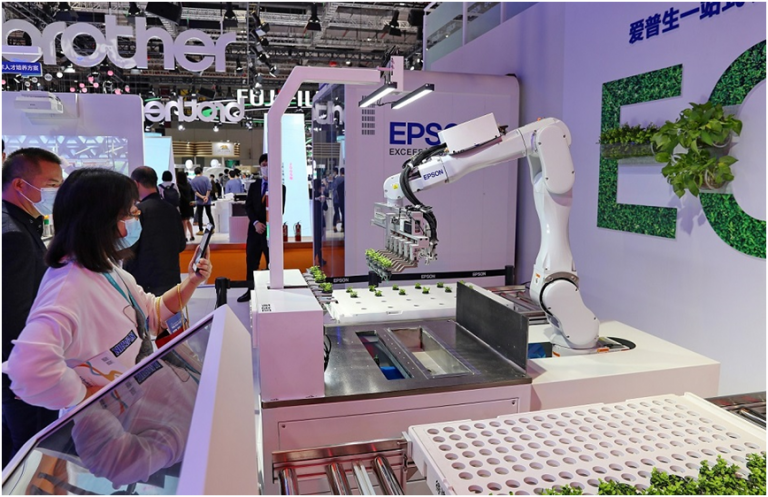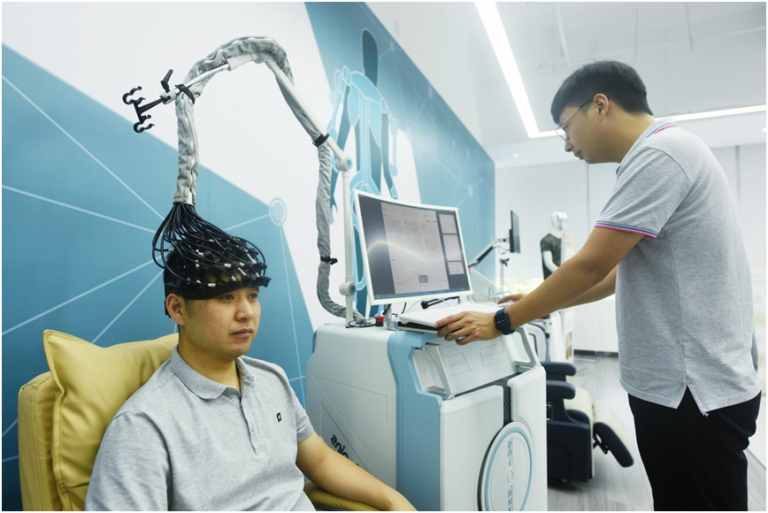
By Yu Sinan, People’s Daily
The scale of China’s core artificial intelligence (AI) industry has exceeded 400 billion yuan ($55.2 billion), and the number of related enterprises stands at more than 3,000.
Thanks to the booming demand brought about by massive data processing, as well as the testing ground provided by large numbers of application scenarios, China is now a global leader in terms of computer vision and speech recognition.
The Ministry of Industry and Information Technology, together with other five relevant departments, recently issued a guidance on accelerating high-level AI applications to promote high-quality development. It aims to build major application scenarios and expand the application of AI technology, including conducting high-level scientific research.
Today, China is seeing rapid development in the AI sector, enjoying advantages in data acquisition, experiment prediction and result analysis. The AI technology has been employed in a number of disciplines such as life science, math, chemistry and space science.
The rich application scenarios are also in turn driving the development of AI technology, making industries more intelligent.
AI is widely employed in life science, especially protein structure prediction.

The structures of proteins are three-dimensional. The primary structure of a protein consists of a sequence of a chain of amino acids. The three-dimensional structure determines the functions of a protein in a cell. Many diseases derive from the abnormal structure of important proteins.
Therefore, only by drawing a “three-dimensional map” of important proteins can drug targets be located, which helps the development of effective medicines.
Traditionally, scientists observe protein structures through cryo-electron microscopy, X-ray and magnetic resonance imaging, which are time-consuming, expensive and difficult. That’s why successful observation cases through traditional methods are rare.
However, amino acid sequencing is much easier. Predicting protein structure from the primary structure of proteins is exactly what AI is good at.
As the amount of biological data has surged and AI technology has evolved over recent years, scientists have made prediction models more precise.

For instance, the AI program AlphaFold caused a sensation in December 2020, when it dominated a protein structure prediction contest – its predictions were on par with experimentally determined structures.
It is reported that researchers have predicted the structures of over 200 million proteins of around a million species through AI technology, almost all proteins that have been recorded by scientists.
These structures will have a huge impact on structural biology and may even trigger a paradigm change in life science studies and improve mankind’s understanding of life.
The demand of the bio-pharmaceutical industry is an important driving force that pushes the application of AI in life science studies. It is learned that the number of medicines developed per $1 billion of investment has been on a constant decrease. The development of new medicines is becoming more difficult and takes longer. New methods of bio-pharmaceutical development are needed, and the expectations are high for AI.

Earlier this year, the National Supercomputing Center of China in Chengdu, Sichuan province, offered theoretical basis for cultivating high-yielding and high-quality wheat through a protein prediction model.
Targeted treatment is another area where AI is employed. Through machine learning, AI is able to decode people’s immune systems and the complex immunity mechanisms of some diseases, thus helping people understand diseases and develop medicines and therapies in a more efficient and targeted manner.
Experts said that it’s necessary to give full play to China’s advantages in its rich application scenarios of AI to promote higher-level development of AI. Building major application scenarios centering on high-level scientific researches will promote better development of Chinese AI technology and better drive China’s high-quality development.










